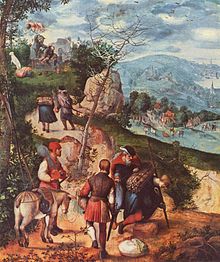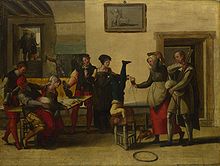
Genre art is the pictorial representation in any of various media of scenes or events from everyday life, such as markets, domestic settings, interiors, parties, inn scenes, work, and street scenes. Such representations may be realistic, imagined, or romanticized by the artist. Some variations of the term genre art specify the medium or type of visual work, as in genre painting, genre prints, genre photographs, and so on.

In art history, "Old Master" refers to any painter of skill who worked in Europe before about 1800, or a painting by such an artist. An "old master print" is an original print made by an artist in the same period. The term "old master drawing" is used in the same way.

The Herzog Anton Ulrich Museum (HAUM) is an art museum in the German city of Braunschweig, Lower Saxony.
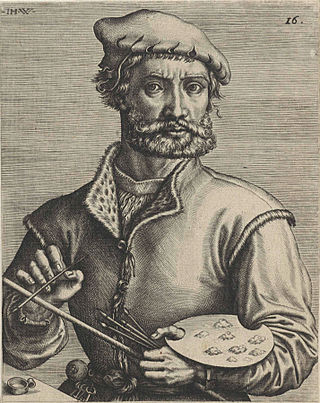
Pieter Coecke van Aelst or Pieter Coecke van Aelst the Elder was a Flemish painter, sculptor, architect, author and designer of woodcuts, goldsmith's work, stained glass and tapestries. His principal subjects were Christian religious themes. He worked in Antwerp and Brussels and was appointed court painter to Charles V, Holy Roman Emperor.
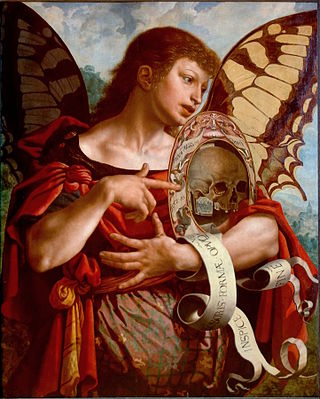
Jan Sanders van Hemessen was a leading Flemish Renaissance painter, belonging to the group of Italianizing Flemish painters called the Romanists, who were influenced by Italian Renaissance painting. Van Hemessen had visited Italy during the 1520s, and also Fontainebleau near Paris in the mid 1530s, where he was able to view the work of the colony of Italian artists known as the First School of Fontainebleau, who were working on the decorations for the Palace of Fontainebleau. Van Hemessen's works show his ability to interpret the Italian models into a new Flemish visual vocabulary.

Caterina or Catharina van Hemessen was a Flemish Renaissance painter. She is the earliest female Flemish painter for whom there is verifiable extant work. She is mainly known for a series of small-scale female portraits completed between the late 1540s and early 1550s and a few religious compositions.
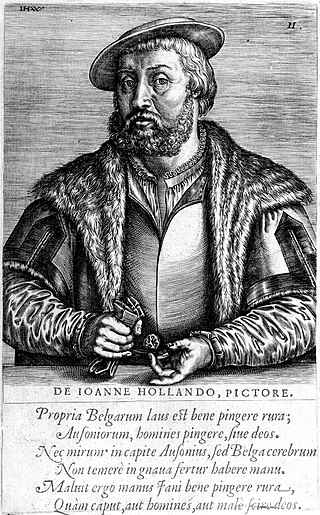
Jan van Amstel, or Jan de Hollander, was a Dutch Northern Renaissance painter.
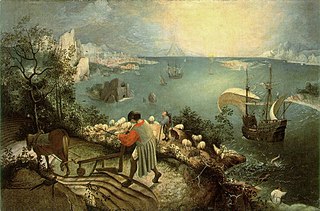
Dutch and Flemish Renaissance painting represents the 16th-century response to Italian Renaissance art in the Low Countries. These artists, who span from the Antwerp Mannerists and Hieronymus Bosch at the start of the 16th century to the late Northern Mannerists such as Hendrik Goltzius and Joachim Wtewael at the end, drew on both the recent innovations of Italian painting and the local traditions of the Early Netherlandish artists. Antwerp was the most important artistic centre in the region. Many artists worked for European courts, including Bosch, whose fantastic painted images left a long legacy. Jan Mabuse, Maarten van Heemskerck and Frans Floris were all instrumental in adopting Italian models and incorporating them into their own artistic language. Pieter Brueghel the Elder, with Bosch the only artist from the period to remain widely familiar, may seem atypical, but in fact his many innovations drew on the fertile artistic scene in Antwerp.

Genre painting, a form of genre art, depicts aspects of everyday life by portraying ordinary people engaged in common activities. One common definition of a genre scene is that it shows figures to whom no identity can be attached either individually or collectively, thus distinguishing it from history paintings and portraits. A work would often be considered as a genre work even if it could be shown that the artist had used a known person—a member of his family, say—as a model. In this case it would depend on whether the work was likely to have been intended by the artist to be perceived as a portrait—sometimes a subjective question. The depictions can be realistic, imagined, or romanticized by the artist. Because of their familiar and frequently sentimental subject matter, genre paintings have often proven popular with the bourgeoisie, or middle class.

Adriaen van der Werff was a Dutch painter of portraits and erotic, devotional and mythological scenes. His brother, Pieter van der Werff (1661–1722), was his principal pupil and assistant.

Mayken Verhulst, also known as Marie Bessemers, was a sixteenth-century miniature, tempera and watercolor painter, identified by Lodovico Guicciardini in 1567 as one of the four most important female artists in the Low Countries. She was actively engaged in the workshop of her husband, Pieter Coecke van Aelst, posthumously publishing his works. While she is recognized as an exceptionally skilled artist, little is known about her works or life as there are few surviving attributable sources of information.

Floris Gerritsz van Schooten or Floris van Schooten was a Dutch painter who practised in a broad range of still life genres including breakfast pieces, fruit pieces, market scenes and large kitchen pieces.

Justus van Huysum, also spelled Huijsum, was a Dutch Golden Age painter.

Joos van Winghe, Jodocus a Winghe or Jodocus van Winghen (1544–1603) was a Flemish painter and print designer. He is known for his history paintings, portraits, allegories and genre scenes, including merry companies. He worked in Brussels as court painter and left Flanders after the Fall of Antwerp in 1584. He then worked in Frankfurt for the remainder of his career. In Germany he enjoyed the patronage of Holy Roman emperor Rudolf II and adopted a more clearly Mannerist style.

The Procession to Calvary is an oil-on-panel by the Netherlandish Renaissance artist Pieter Bruegel the Elder of Christ carrying the Cross set in a large landscape, painted in 1564. It is in the Kunsthistorisches Museum in Vienna.

Merry company is the term in art history for a painting, usually from the 17th century, showing a small group of people enjoying themselves, usually seated with drinks, and often music-making. These scenes are a very common type of genre painting of the Dutch Golden Age and Flemish Baroque; it is estimated that nearly two thirds of Dutch genre scenes show people drinking.

The Master of the Prodigal Son, was the notname given to a Flemish painter and designer of tapestries and stained glass. He was active in Antwerp where he operated a large workshop between 1530 and 1560. He painted religious subjects, landscapes, genre scenes and allegories. He is regarded as a leading master of Flemish Mannerism in the sixteenth century.

Jan Rombouts the Elder, Jan Rombouts (I), was a Flemish Renaissance painter, glass painter, draftsman, printmaker and glass designer. The subjects of his work are stories from the Old and New Testament and the lives of Christian saints. He was active in Leuven where he introduced the Renaissance innovations of Bernard van Orley and the Antwerp school.

Huybrecht Beuckeleer, Huybrecht Beuckelaer or the Monogrammist HB was a Flemish painter who is mainly known for his genre paintings, still lifes and portraits. He was trained in Antwerp and also worked in Italy, France and England. In England he was court painter to Robert Dudley, 1st Earl of Leicester.

Pieter van der Hulst the Younger or Pieter van der Hulst (II) was a Flemish landscape and genre painter who was active in Antwerp. He was an assistant of Rubens for some time.
